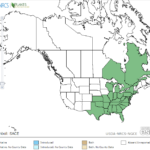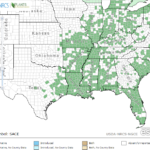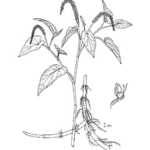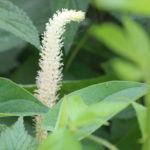Saururus cernuus
USDA, NRCS. 2018. The PLANTS Database (http://plants.usda.gov, 28 March 2018). National Plant Data Team, Greensboro, NC 27401-4901 USA.
Illustration courtesy of University of Florida/IFAS Center for Aquatic and Invasive Plants. Used with permission.
What is Lizard’s Tail?
Physical Characteristics
- Grows up to about 3 feet tall
Leaves:
- Heart-shaped
- Up to 5.91 inches long
- Leaf stalk as long as the blades
Flowers:
- White in color
- Crowded
Spike:
- Up to 1 foot long and 0.59 inches in diameter
- Covered with short, soft hair
Fruit:
- Somewhat fleshy and wrinkled
Stem:
- Naked on bottom
- Leafy on top
- Simple or branching
Where Does it Grow?
Lizard’s tail can be found in the water or muddy soil of lakes, swamps, and streams. It is shade tolerant and exists as a common understory plant in hardwood bottomlands and cypress-tupelo gum swamps.
Pros and Cons of Lizard’s Tail
Lizard’s tail has no known direct food value to wildlife. Submerged portions of all aquatic plants provide habitats for many micro and macro invertebrates. These invertebrates in turn are used as food by fish and other wildlife species (e.g. amphibians, reptiles, ducks, etc.). After aquatic plants die, their decomposition by bacteria and fungi provides food (called “detritus”) for many aquatic invertebrates.





